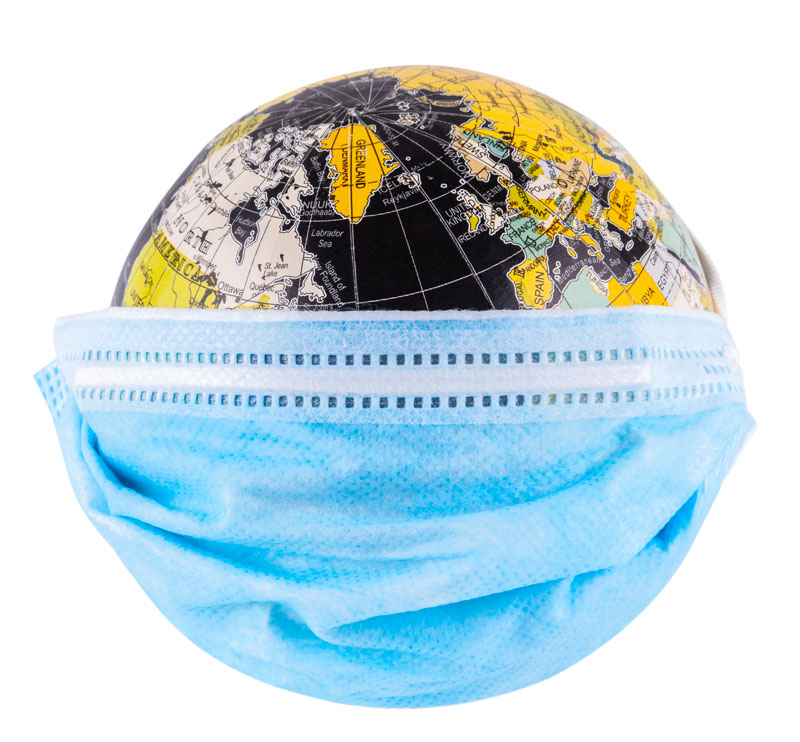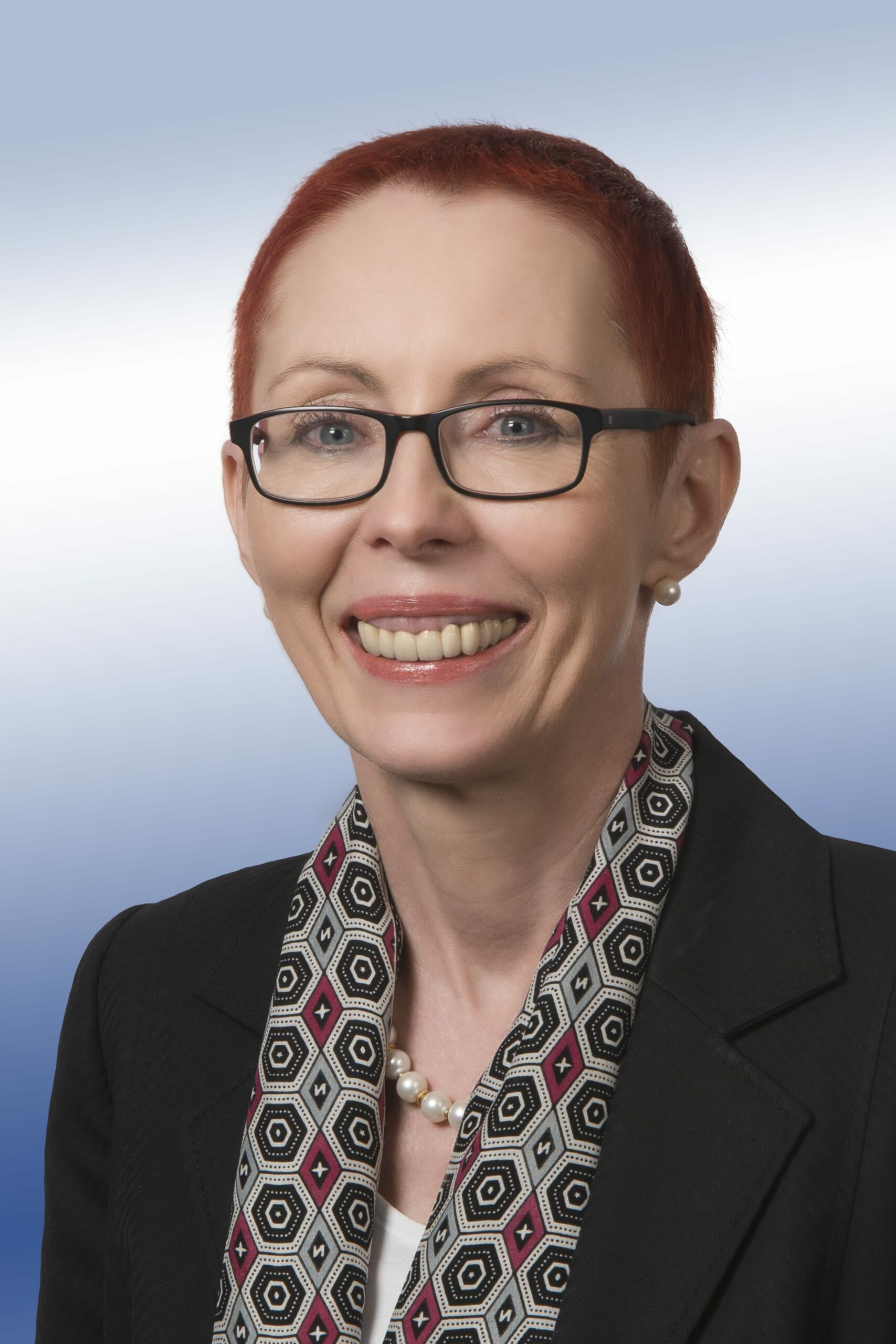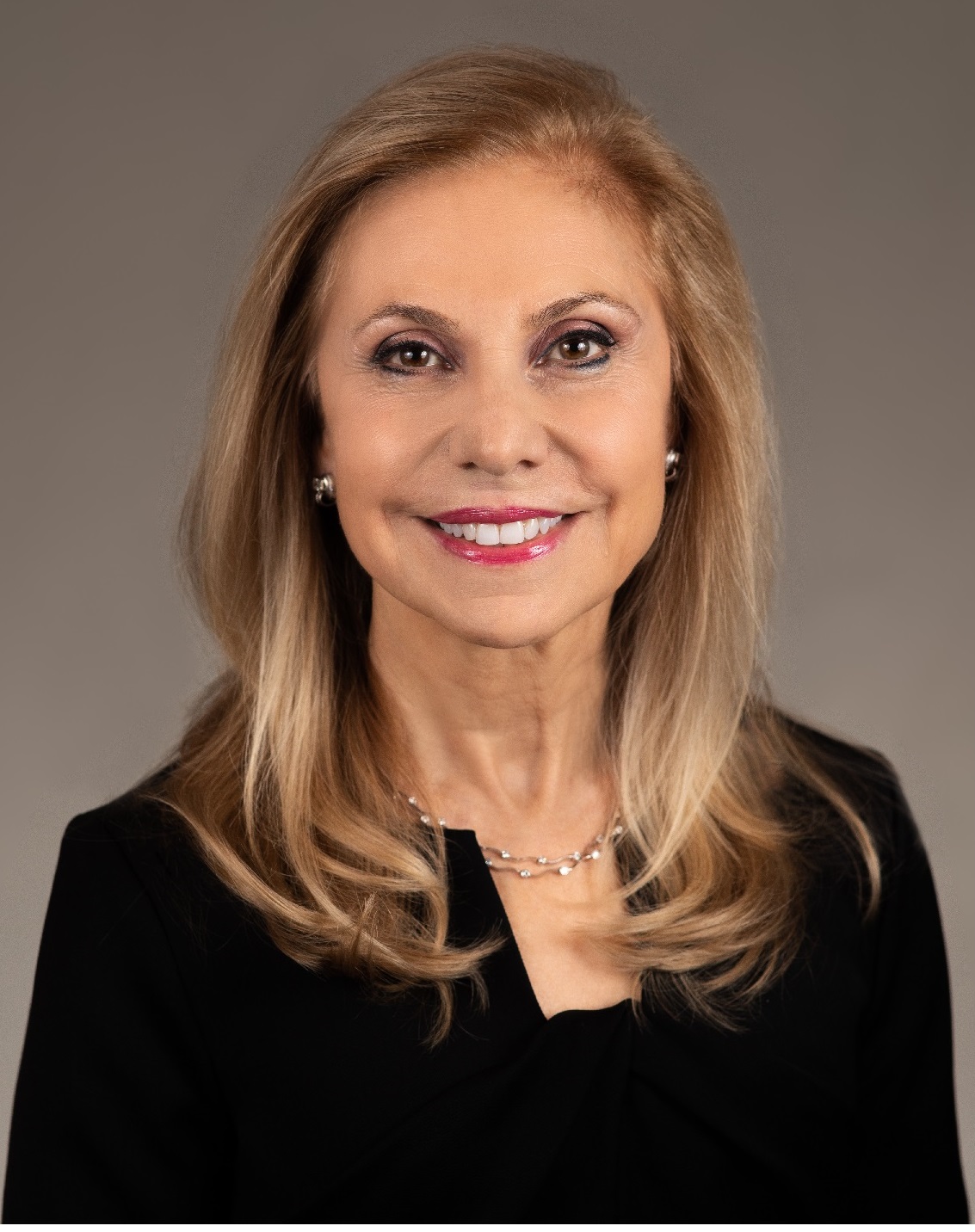Unfortunately, 2020 will be forever known as the year that brought us COVID-19. With hits like “Disruptions in Treatment,” “Emergent Procedures Only,” and “This Congress is Virtual” — both ophthalmologists and industry partners were left to navigate the pandemic’s new normal in the quest to deliver eye care.
2020: What the Heck Happened?
In January 2020, the coronavirus was busy making its jump from China. It would then spread ruthlessly throughout the world, crippling healthcare systems and economies along its way. However, even then, not many of us realized COVID-19’s full “potential” — and that one year later, we still wouldn’t be out of the woods.
Below, we speak with ophthalmology and industry experts to learn more about the pandemic’s impacts on anterior segment practice.
Let’s Talk Cash Flow

Dr. Lisa Nijm is a board certified ophthalmologist at Warrenville EyeCare and LASIK in Illinois, USA. She said that overall, as a specialty, surgical and in-office volumes are still not at pre-pandemic levels. “We have all had to make financial adjustments from the pandemic — ophthalmology has been hit harder than other specialties because of the greater proportion of our patients who are elderly, and therefore in a high risk category for COVID,” said Dr. Nijm.
Dr. Harvey Uy is the medical director at the Peregrine Eye and Laser Institute in Makati, Philippines. He said that COVID-19 and the ensuing lockdowns hit practices like a freight train in the second quarter of 2020. Like elsewhere in the world, patient visits and surgeries decreased substantially. These devastating effects are still being felt a year later.
“The pandemic hit both sides of the financial statement,” said Dr. Uy. Revenues plummeted at the start of the lockdown as patients were afraid of contracting COVID-19, while operational costs increased for things like added disinfection, personal protective equipment (PPE), and transportation. “Due to early shortages, the cost of these items was very high at the start.”
Thanks to additional safety measures, he said they have been able to bring their practice back to a sustainable level. “Over time, business has improved and I believe we will end the year at least breaking even,” shared Dr. Uy.
Dr. Cynthia Matossian, M.D. is the founder and CEO of Matossian Eye Associates, a combined ophthalmology and optometry practice with offices in New Jersey and Pennsylvania, USA. She said the pandemic has impacted her practice in incalculable ways. “The lockdown last March, which lasted a few months, created an unanticipated disruption in our cash flow as we were restricted to only see urgent and emergent vision-threatening cases,” shared Dr. Matossian. She said that today, all physicians are currently working longer hours to make up for the months their practice was closed.
Dr. Sudhir Singh is a senior consultant and head of ophthalmology at the Global Hospital and Research Centre in Mount Abu, India. He shared that the COVID-19 pandemic has changed medical practice significantly. “Now, we have ‘new normal’ protocols for office patients, and for medical and surgical treatments, which are more time and money consuming than before COVID-19,” said Dr. Singh. In addition, the number of medical and surgical patients has decreased.
Working for a not-for-profit organization, there were limited opportunities to raise fund during the pandemic. To continue their charitable work, salaries were cut for six months. Dr. Singh shared that he has managed well during the pandemic due to his lifestyle, which is based on minimum necessities in his professional and personal life.
“My fraternity in private practice had a substantial impact on their practices and business for the first six months of the pandemic. Most of them have had some financial strain to meet their expenses,” said Dr. Singh.
Dr. Sibylle Scholtz is an international science correspondent and associate senior research fellow at the Institute of Experimental Ophthalmology, Saarland University, in Homburg, Germany. She, along with Prof. Achim Langenbucher, described the pandemic’s impacts in regard to IOLCon, an international platform with data on intraocular lens (IOL) characteristics and optimization of lens constants.
In her line of work, Dr. Scholtz said COVID-19 has led to fewer patient visits and treatments, and less time to enhance lens biometry and lens power calculations while quality control systems were established.
“Planning just isn’t possible as regulations are changing day-by-day,” she said. However, Dr. Scholtz and colleagues have found time to establish and enhance internal standards. This includes the use of databases for transferring the best formula constants to get the best visual performance after cataract surgery. They have also presented information about IOLCon at several international webinars.
Does Anyone Remember the “Old” Normal?

In addition to financial losses, much time was spent to create the “new normal” in ophthalmology. This included hours spent developing protocols for the “new way” of seeing patients, as well as completing government financial relief documents.
“Since most physicians are not accountants, nor do they have expertise in this area, many ophthalmologists found the completion of these documents to be very stressful,” said Dr. Matossian. Further, supplies like hand sanitizer, masks, PPE, and gloves were in short supply, as everyone was scrambling to procure these items simultaneously. Mail and distribution disruptions also caused them to run out of other commonly used products.
In the Philippines, Dr. Uy agreed: “Resources were directed towards screening for COVID-19, sourcing PPE, instituting aggressive disinfection practices — all at a time when everyone was simultaneously pursuing the same items.” Thankfully, they were fortunate to receive PPE donations from patients and disinfectant from the Department of Health.
He said that his greatest challenge was ensuring the safety of patients and staff as they formulated and implemented more stringent anti-infection policies and procedures. Dr. Uy credits the ophthalmic societies for being proactive and sharing information, which he said was “immensely helpful for formulating pandemic countermeasures”.
Back in the United States, Dr. Nijm said they were challenged to rethink each step of the patient journey to be more efficient and reduce waste. Further, constant mask-wearing posed its own set of problems: “From a patient perspective, many people rely on lip reading to assist with hearing — this has presented challenges when our lips are covered with a mask. From a physician and staff perspective, wearing a mask is an absolute necessity but it makes something as simple as drinking water throughout the day an extra chore.”
Telemedicine Offers a Lifeline
Telemedicine has also become a popular necessity to maintain patient care. And while ophthalmologists generally don’t shy away from new technology (at least as it relates to eyeballs), Dr. Matossian said that learning about telehealth and integrating it into practice within one to two weeks was quite a hurdle to clear.
Meanwhile, Dr. Uy said they focused on developing a more “friendly” telemedicine system. Improvements included a dedicated mobile phone number for scheduling consults, an increased number of available telemedicine platforms, and more payment modes.
Even so, telemedicine couldn’t cover everything. Many patients still needed to come in for diagnostic testing and a thorough eye exam, said Dr. Uy, who noted that home visits have also increased.
Dr. Nijm said that since they’ve resumed office visits, the use of telemedicine has dropped. However, the door remains open for technology that enhances patient care.
“I have been impressed with the number of patients who are willing to learn how to utilize technology,” she shared. “As holding family gatherings over Zoom has become more of the norm, patients who might not otherwise have been keen to use their smartphone or computer to connect with their doctor now consider that a reasonable option.”
She has also incorporated more digital education, which allows patients to learn more about their condition from the comfort of their home. “I also have conducted hybrid visits that allow patients to come in for testing and examination, while having most of the discussion via phone or video call,” shared Dr. Nijm.
Safety Matters: Keep Your COVID to Yourself

Around the world, ensuring the safety of both patients and staff has been paramount during the pandemic. New safety measures included limiting patients on-site, both in the waiting and operating rooms.
According to Dr. Uy, they created a “surveillance system” that involved rapid testing to screen and monitor patients and staff for potential infection. “Patients appreciated the rapid testing we instituted to screen for surgery — no one objected to the additional cost,” shared Dr. Uy. “We also designed and transferred Peregrine Eye and Laser Institute to a new and larger ambulatory surgery center [with more room for] social distancing.”
Dr. Nijm also said that all patients must be preoperatively tested for COVID-19. “In the clinic, we have also employed additional precautions to protect patients and staff — from conducting screenings over the phone and temperature checks, to hand washing and social distancing in the office,” she said, adding that her patients appreciate the additional precautions. “They have been grateful for the extra time and attention to detail to ensure their safety.”
Patients’ desire to make in-person office visits correlates with their condition, added Dr. Matossian. Those needing cataract or cosmetic blepharoplasty surgeries are waiting, while patients with progressive, sight-threatening conditions like age-related macular degeneration (AMD) are keen to come in for their scheduled anti-vascular endothelial growth factor (VEGF) treatments.
Dr. Nijm agreed with Dr. Matossian: Patients’ comfort level has been significantly affected. “I have had many patients who delayed seeking treatment for various eye conditions during the height of the pandemic,” she shared. “While most of them have returned, there are some who still do not leave the house very much and are not comfortable enough to have their second eye cataract surgery or glaucoma check.”
Unfortunately for some conditions, not seeking treatment can have devastating consequences.
“We witnessed many heartbreaking cases of patients with macular degeneration, uveitis, and acute glaucoma permanently losing vision because of delayed access to eye care — these cases spurred us on to continue operations. Much credit goes to our frontline staff for braving the dangers and coming in to help care for patients,” said Dr. Uy.
Meanwhile, in India, ophthalmologists face similar circumstances. “It is a challenge for medical professionals to serve society [during the pandemic]. We have lost thousands of medical professionals worldwide. We have lost hundreds of medical doctors in India, too,” said Dr. Singh. “It was an unprecedented challenge for me, like other medical professionals, to stay physically and mentally strong to serve society.”
According to Dr. Matossian, these staff shortages are a continuing ramification of COVID-19. “Many of our staff either did not wish to return to work since they live in a multi-generational household and were concerned about bringing COVID home, or they felt the need to stay home to help their children with virtual school.
“Some of our staff had compromised medical conditions themselves, and did not wish to take the risk of working closely with patients. For all of the reasons mentioned, we are short staffed. And according to many of my colleagues and experts in the field, this is a nationwide trend,” shared Dr. Matossian.
Silver Linings Appear, Despite COVID-19’s Best Efforts
Even though it may have felt that 2020 dealt us a bad hand, the year that brought us COVID also brought some positives, like more time with family. And this reduction in workload left many ophthalmologists with extra time on their hands — perhaps for the first time in a long time!
“The greatest opportunity presented by the pandemic was the increased time to bond with family members and to focus on improving health and wellness. Many of our staff lost weight, exercised more, and had better interactions with their families,” shared Dr. Uy.
“The pandemic taught us that what really matters is family support and basic amenities,” agreed Dr. Singh, who has spent more time with family doing activities like going for nature walks, taking wildlife photography, and growing vegetables in the garden. He also used time during the lockdown to connect with his MBBS and MS mates, which wouldn’t have been possible pre-COVID due to their busy schedules: “It was so refreshing and a stress-buster for us.”
Besides doing clinical work, Dr. Singh said he also used the downtime to catch up on studying, editing, and archiving surgical videos, and mentoring his postgraduate ophthalmology student’s research. “I evaluated free papers and video films for our All India Ophthalmological Society’s upcoming conference in 2021 and contributed to some of the national ophthalmology webinars,” he added.
Dr. Nijm also used the downtime productively: “I took advantage of the extra time during the height of the pandemic to design my first clinical trial. A quiet office was the perfect opportunity to set up the infrastructure needed for success in research.”
Additionally, Dr. Nijm launched a new website to help physicians improve their negotiation skills: www.MDNegotiation.com. “The pandemic highlighted the need for physicians to not only focus on lean practices, but to sharpen their business skills as well. After coaching and teaching negotiation skills for a number of years, I made the decision to launch this new educational venture to help ophthalmologists improve this crucial life skill during the pandemic,” she shared.
Another silver lining? More efficiency and creativity with visits to ensure patients receive the highest level of care, all while minimizing the risk of exposure to COVID-19. “I also think this pandemic has challenged us to be better prepared for future unexpected interruptions in practice. I have spent a lot of time working with my staff to ensure we are well prepared to care for our patients should a resurgence of COVID occur in the future,” said Dr. Nijm.
Further, Dr. Uy saw the benefits of shifting physical meetings to an online format. “Physicians were able to learn just as much — or even more — by attending some of the countless webinars, virtual congresses and accessing online learning resources,” he said, noting the environmental benefits as well.
Meanwhile, Dr. Matossian said at her practice they’re looking forward to a less stressful work environment in 2021. “Our goal is to exceed our pre-COVID levels by working in a more streamlined fashion and by shortening the patient throughput by compartmentalizing the non-diagnostic portions of the visit and completing those online beforehand in a HIPPA-secure manner.”
Looking Toward Optimism and Innovation in 2021
At press time, COVID-19 vaccines are in various stages of development and distribution around the world — but there is still a long way to go until things can return to “normal”.
Until then, there is plenty of space for ophthalmic innovation. In 2021, Dr. Singh shared that, as a firm believer and proponent of affordable health for all, he will continue to focus on innovative surgical techniques that eliminate the need for expensive machines and technologies without compromising outcomes. “This was my focus, even before the pandemic,” he said. Dr. Singh invented an intratunnel phacofracture MSICS technique. It costs about US$10 and eliminates the need for expensive phaco machines and consumables.
While the pandemic continues, there are also opportunities in home diagnosis, monitoring, and sustained release drugs, said Dr. Uy. “There will also be a need for affordable, portable OCT, high-resolution fundus cameras, long-acting intravitreal medications, and drug eluting medical devices. Artificial intelligence will also be needed to interpret remotely generated images,” he continued. Further, home COVID-19 testing, such as saliva tests, will be the dominant method for screening patients in the future; while automated chatbots will take over routine practice queries and appointment scheduling. “There will likely be at least a short-term shift from tertiary hospital eye care to smaller, out-patient clinics,” concluded Dr. Uy.
Dr. Nijm said she is looking forward to new developments and innovations in diagnosis and treatment of myopia, presbyopia, and dry eye. “These are three very common diseases that affect a huge portion of the population worldwide and what I have seen coming down the pipeline is very exciting,” she shared. “In the surgical arena, I think the incorporation of AI, virtual reality and visualization will elevate the next generation of IOLs and cataract surgery. And as the number of patients with cataracts rises, we will need these advancements in technology to provide much needed care for these patients.”
The View from Within: Industry Insights from Geuder
Mr. Hamadi El-Ayari is vice president of sales and marketing at Geuder AG in Heidelberg, Germany. Geuder is a leading manufacturer of ophthalmic surgical instruments, devices and ultrapure biomaterials. As an industry partner, Mr. El-Ayari shared his perspective on the pandemic’s implications.
“In terms of figures, we can’t really complain,” he said. Turnover was lower than last year and thankfully, they only had two employees who tested positive for COVID-19, both of whom had mild symptoms and have recovered.
Mr. El-Ayari said the biggest impact is the loss of resources. “Geuder went into a government-sponsored ‘short-time working program’ to counterbalance the decline in demand,” he explained. “Many of our service and cooperation partners lacked resources, which caused delays in various projects and affected innovation. Implementation of the new medical device regulations has consumed resources, too.”
Looking at specific segments, we’d likely see COVID-19’s impacts on an individual country basis. For example, when did the virus arrive, when did the government lock down, and which surgeries were elective, continued Mr. El-Ayari.
“The number of phaco surgeries declined significantly in some regions (because they were postponed or cancelled). DMEK and corneal surgeries recovered rather fast, but we see a lack of donor availability in some countries. While vitrectomy was less affected, as many posterior pathologies are progressive, it’s not recommended to delay those surgeries,” he explained. “I believe refractive surgery experienced a boom as everybody got sick of foggy glasses while wearing masks.”
The “Virtually” Impossible Physical Congress

Although physicians may embrace the virtual meetings and webinars, industry partners may find them to be less efficient and personal.
“Ophthalmology and its technologies are complex. A personal conversation, wetlab, OR visit, or a hands-on discussion is difficult to replace with a video call,” said Mr. El-Ayari. He credits Geuder’s longevity — the company celebrates its 70th anniversary this year — with its success during this challenging time. “We maintain excellent and long-lasting personal contacts with many ophthalmologists around the globe, as well as with our distribution and cooperation partners.”
He said this has likely made it easier for Geuder to move into the more non-personal online realm versus a start-up, which may not have those established relationships. However, he said that as a mid-sized company, personal contact is also a key to their success. “You can’t have a chat with Mr. Zeiss, Mr. Alcon or Mr. Bauch & Lomb — but you can talk to Mr. Geuder.”
So, how has the absence of physical congresses impacted Geuder’s business? Mr. El-Ayari said it’s difficult to measure, though it’s certainly had an impact.
“Ideas for innovative new products always came from cooperation and personal conversations with surgeons… and the virtual alternatives did not really focus on personal exchange and communication. The visitor might follow the session live, or months later offline, but it’s more challenging for companies to directly interact with the key opinion leaders (KOLs),” he explained. “In a real conference, we are all there at the same time and place. We do not only meet at scheduled meetings, but we also meet casually [throughout the venue]. ‘Live’ is all about communication.”
“Ultimately, we miss the personal contact very much and we look forward to the next bigger conference in order to feel like a fish in the water again,” said Mr. El-Ayari.
On Opportunities and Innovations Ahead
Like the physicians we spoke with, industry folk are also optimistic about new opportunities in ophthalmology. Mr. El-Ayari said Geuder has recently launched various exciting innovations. This includes a comprehensive suture portfolio for glaucoma, like the Kodomskoi suture-probe for non-filtrating glaucoma surgery — which has shown significant reduction of intraocular pressure (IOP) and offers a price-sensitive, state-of-the-art alternative to stent insertion, and the bi-manual intraocular micro-suture technique for IOL fixation or iris reconstruction, developed by Prof. Hattenbach.
“We launched new highly efficient phaco tips that reduce surgery time and a revolutionary multifunctional phaco distal chopper in cooperation with Dr. Jacobovitz,” shared Mr. El-Ayari. “We also have a new DMEK-unfolding cannula developed with Dr. Saad and have established the game-changing Descemet membrane endothelial keratoplasty (DMEK)-RAPID preloading system — the first CE-certified system to preload a human donor Descemet-membrane, directly at the cornea bank.”
Geuder has also enhanced its portfolio for posterior segment products. “There is so much more to come — and this is why we’re missing the personal communication and in-person meetings, and to celebrate our 70th anniversary and share our innovations,” he continued.
“I do hope we will get back to in-person meetings, where you can meet the publishing doctor in front of his poster, drop your forceps for repair at the Geuder booth, or have a drink and chat and share gossip about God knows what — as this is vital, too,” concluded Mr. El-Ayari.









